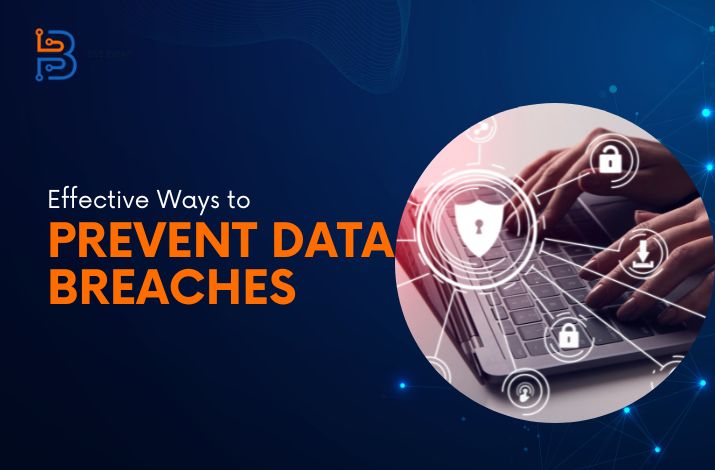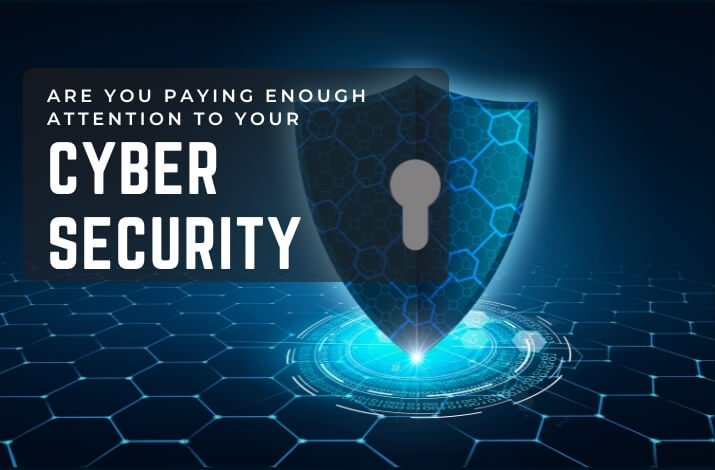Effective Ways to Prevent Data Breaches in 2024

In this digital age, data is the lifeblood for both companies and individuals. Although a very important asset, this resource is vulnerable to data breaches. Data breaches may result in huge financial losses and reputational damage towards a given organization. It’s important protect your confidential details and private.
This article outlines effective ways to prevent data breaches in 2024 and beyond.
Understanding Data Breaches
Data breaches happen when there is leakage of information only meant for a select few. Such breaches can involve the hacks, insiders, or even devices that are misplaced or stolen. It is important to understand the various ways through which data breaches can happen in order to prevent them successfully.
The Impact of Data Breaches
Data breaches can be disastrous and can cause financial losses, damage to a company’s reputation, and the compromise of customer trust. Preventing these breaches is essential to protect your bottom line and to maintain the trust of your stakeholders as well. Thanks to advanced solutions like data breach checker tool, organizations can identify and prevent such attacks easily to maintain customer trust and credibility.
Ways to Prevent Data Breaches
Here are mentioned below:
Educating Your Team
One of the most critical aspects of data breach prevention is education. Train your employees on security best practices, the importance of strong passwords, and how to identify phishing attempts. When your team is aware of potential threats, they become the first line of defense against data breaches.
Ensure that your training program covers the following:
Security Best Practices- Teach your employees the fundamentals of cybersecurity. This includes recognizing and avoiding suspicious emails, websites, and links.
Password Hygiene- Emphasize the importance of strong and unique passwords. Encourage employees to use a combination of letters, numbers, and special characters in their passwords.
Phishing Awareness- Train your team to spot phishing attempts. Hackers often use deceptive emails and websites to trick individuals into revealing sensitive information.
Regular Software Updates
Outdated software is a prime target for cybercriminals. Ensure that all your software and applications are regularly updated to patch known vulnerabilities. This simple step can significantly enhance your security.
When implementing regular software updates, consider the following:
Automatic Updates- Enable automatic updates for all your software whenever possible. This ensures that security patches are applied promptly.
Patch Management- Have a system in place for monitoring and applying patches. It’s important to keep track of what’s updated and when.
Third-party Software- Don’t forget about third-party applications. Keep them up to date to close potential security gaps.
Read Also: Cybersecurity Essentials
Implementing Strong Password Policies
Weak passwords are a major security vulnerability. Enforce strong password policies that require complex combinations of letters, numbers, and special characters. Regularly prompt your employees to update their passwords.
Here are some key elements of a strong password policy:
Password Complexity- Set requirements for password complexity. For instance, passwords should be at least eight characters long and include a mix of upper and lower-case letters, numbers, and special characters.
Password Expiry- Implement a policy that requires password changes at regular intervals, like every 90 days.
Multi-Factor Authentication- Encourage or mandate the use of MFA to provide an additional layer of security.

Data Encryption
Encrypting sensitive data adds an extra layer of protection. Whether data is in transit or at rest, encryption ensures that even if unauthorized access occurs, the data remains unintelligible to intruders.
Key considerations for data encryption include:
End-to-End Encryption- Implement end-to-end encryption for communication. This ensures that data is only accessible by the intended recipient.
Data at Rest- Encrypt data stored on servers and devices. This provides protection in case of physical theft or unauthorized access.
Conducting Regular Security Audits
Periodic security audits help identify vulnerabilities in your systems and processes. By proactively addressing these weaknesses, you can reduce the risk of data breaches.
Here’s how to conduct effective security audits:
Schedule Regular Audits- Plan and schedule security audits at least annually or after significant system changes.
Vulnerability Scanning- Use vulnerability scanning tools to identify weaknesses in your network and systems.
Penetration Testing- Hire experts to conduct penetration testing to simulate real-world attacks and identify potential vulnerabilities.
Employee Training and Awareness
Continuously educate your employees about the latest security threats and best practices. Regular awareness programs can keep your team vigilant against evolving threats.
Consider these points when training and raising awareness among employees:
Ongoing Training- Cyber threats evolve, so training should be an ongoing process to keep employees up to date with the latest security issues.
Simulated Phishing Tests- Conduct simulated phishing tests to evaluate employees’ readiness to spot phishing attempts.
Incident Reporting- Encourage employees to report any suspicious activity promptly.
Monitoring Network Activity
Implement monitoring tools to keep an eye on network activity. Detecting unusual patterns or suspicious behavior can help you respond to potential breaches in real-time.
Key elements of network activity monitoring include:
Anomaly Detection- Use advanced monitoring systems that can detect unusual behavior on your network, such as multiple failed login attempts or unusual data access patterns.
Real-time Alerts- Set up alerts to notify your security team when suspicious activity is detected.
Incident Response Plan Integration- Ensure that monitoring is integrated with your incident response plan for a rapid and coordinated response.
Secure Data Storage and Backup
Cloud Storage Security
If you use cloud storage, ensure that it is secure and that access is restricted. Your data should be stored with a reputable cloud service provider.
Consider the following steps to enhance cloud storage security:
Access Control- Limit access to cloud data to only authorized personnel. Implement strong access control measures to prevent unauthorized entry.
Data Encryption- Encrypt data before storing it in the cloud. This adds an extra layer of security even if the cloud provider experiences a breach.
Regular Audits- Periodically audit your cloud storage provider’s security measures to ensure they meet your standards.
Offline Data Backups
Maintain offline backups of critical data. In case of a breach, having an offline copy can be a lifesaver.
Offline backup best practices include:
Data Segmentation- Segment your offline backups by sensitivity. Not all data is equally critical, so focus on the most vital information.
Physical Security- Store offline backups in a secure physical location to prevent theft or damage.
Regular Testing- Periodically test your offline backups to ensure they are up to date and functional.
Vendor Risk Management
If you work with third-party vendors, assess their security measures. Your vendors can be a weak link in your security chain, so it’s essential to ensure they meet your security standards.
Consider these aspects when managing vendor risks:
Security Assessments- Regularly assess your vendors’ security practices, including data protection and compliance.
Contractual Agreements- Establish clear contractual agreements that outline the vendor’s responsibilities for data security.
Third-party Audits- Consider third-party audits of your vendors’ security practices to ensure compliance.
Incident Response Plan
Formation of Incident Response Team
Create an incident response team that knows what steps to take in the event of a breach. This ensures a swift and coordinated response.
Key members of your incident response team should include:
Incident Manager- The individual responsible for overseeing the response effort.
IT Specialists- Experts who can identify and mitigate technical aspects of a breach.
Legal Advisors- Legal counsel to navigate the legal obligations related to the breach.
Communication Experts- Professionals who can handle public relations and communication during the incident.

Data Breach Response
Immediate Action
In the event of a data breach, act swiftly. Isolate affected systems, remove the threat, and start the recovery process immediately.
Immediate actions include:
Containment- Contain the breach by isolating affected systems to prevent further unauthorized access.
Remediation- Remove the threat, whether it’s malware, unauthorized users, or compromised accounts.
Documentation- Carefully document the incident, including what occurred and how it was addressed.
Legal Obligations
Understand your legal obligations regarding data breaches. Depending on your location and industry, there may be specific regulations you need to follow.
Key legal considerations include:
Data Protection Laws- Ensure conformity to laws regulating the management of personal information like the EU’s General Data Protection Regulation or GDPR.
Notification Requirements- Failing to notify in case of a breach means penalties and should therefore be cautious about such requirements.
Data Retention and Destruction- Understand the requirements for retaining and securely destroying data.
Read Also: Cybersecurity Guidelines for Video Conferencing
Third-party Security Services
Consider employing third-party security services that specialize in data breach prevention and response. They bring expertise and resources that can bolster your security.
When considering third-party security services, keep in mind:
Expertise- Look for services with a strong track record in data breach prevention and response.
Customized Solutions- Choose services that can tailor their approach to your organization’s specific needs.
Emergency Response- Ensure that the service provider offers 24/7 emergency response in case of a breach.
Regularly Assessing and Adapting Security Measures
Cybersecurity is an ever evolving field. Regularly assess your security measures and update them to address new threats.
For ongoing security improvements:
Continuous Monitoring- Implement continuous monitoring to recognize and respond to threats in real-time.
Security Risk Assessments- Conduct regular risk assessments to identify vulnerabilities and develop mitigation strategies.
Employee Feedback- Encourage employees to provide feedback on security measures and policies. They may have valuable insights into potential vulnerabilities.
Conclusion
Nowadays, data breaches are an ongoing threat that requires one to act with an aim of preventing it. Educate your team, secure your data and have an effective incident response plan to mitigate risks of data breach in 2024 and beyond. By being watchful in prevention of data breaches, you not only protect your organization’s data but also its reputation.






